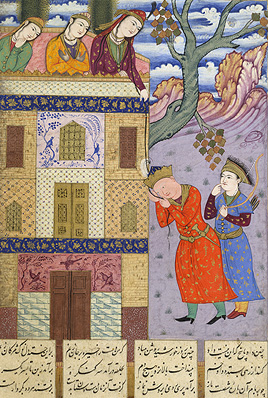Najma Mohamed, Tera Williams, Faisal Fattani
From Snow White and her seven dwarfs, Cinderella’s glass shoe, Belle’s beauty that charmed the cold beast, and more, fairy tales in our modern time have been greatly shaped by Disney’s animation adaptations and pop culture. No different is the tale of Rapunzel and her golden locks; however, before being accompanied by Pascal, her animated pet chameleon in Disney’s 2010 adaptation, who was Rapunzel up in that tower? or more accurately, where was that tower in the first place?
Persian Poet Ferdowsi wrote Shahnameh late in the 10th century; the epic poem included the first story to feature a woman lowering her hair to allow someone to climb up and gain entry to her home, and is traced back to have likely inspired the Rapunzel fairytale. We analyzed the changes between the original text; the revamping of the story into the Brothers Grimm Fairytale; and the 2010 screen adaptation, Tangled. We looked at differences in the popularity of the works, character relationships, and the treatment of the classic “hair-dangling” scene with Rapunzel letting down her hair as it was reinterpreted along the way. Through this exploration, we hope to get a closer understanding of what is different in the framing and character relationships that carry the story forward for our Rapunzel character in an epic poem versus a fairytale versus a movie.
The main question that was analyzed was whether our selected texts of Rapunzelm ranging from classical Persian, German, and English share similarities, and if the theme of the story has remained the same throughout. We identified three source texts to help us better understand Rapunzel’s origins: The script of the Disney film Tangled, the initial publication of the Rapunzel fairy tale, from the Brothers Grimm’s Children and Household Tales; and the text of the classical Persian epic Shahnameh.
Perception of the Different Adaptations
One of the things that we found very interesting was the absence of Shahnameh from the popular cultural narratives around Tangled in the United States. When we began this research, we had not heard of Shahnameh. We looked at Google Trends to see how the release of Tangled affected the interest in both Shahnameh and the Grimms’ version of Rapunzel. One of the most interesting factors was the differences in interest in the different sources based on regionality. When we looked at interest over time, Shahnameh was significantly more popular in Iran than it was worldwide and did appear to have a correlation of interest between Shahnameh and Tangled. Worldwide and in the United States, there was a correlation of increased interest between the fairytale and Tangled. Turkey featured all three sources the most evenly out of any region and spikes in interest seem inconsistently correlated. The interest in Tangled over time was greater in regions with direct proximity to Shahnameh even if there was not a relational increase of interest in Shahnameh in those regions.
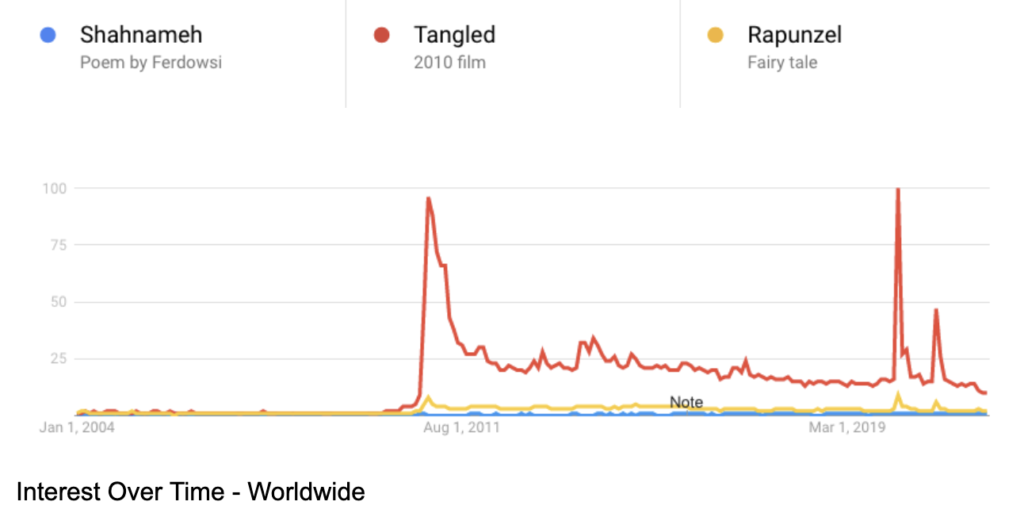
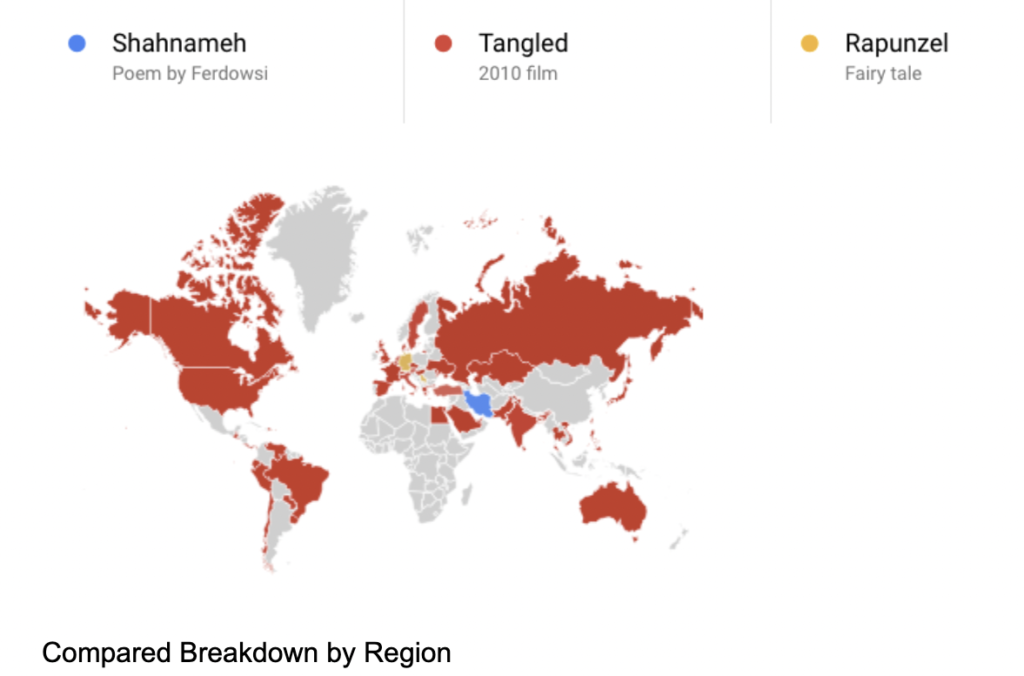
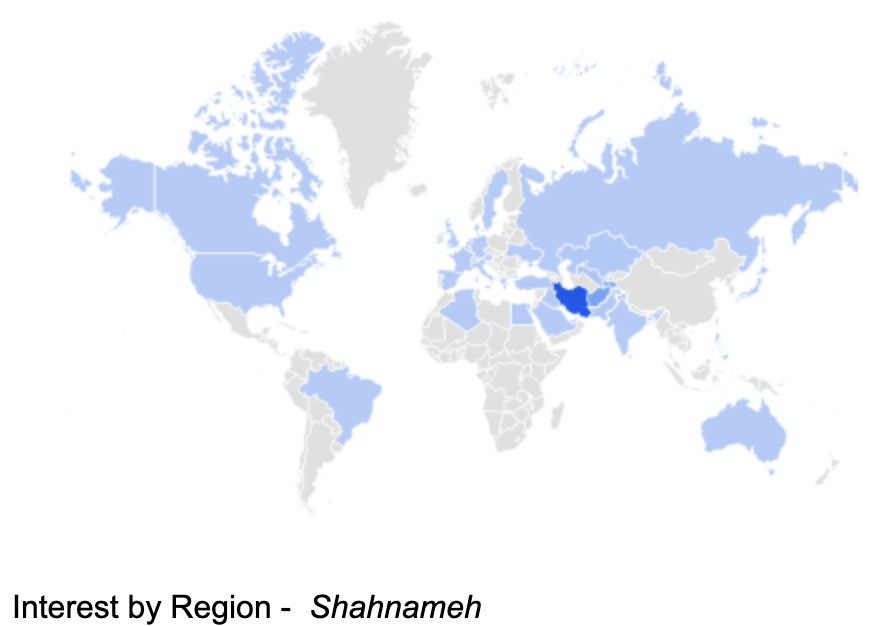
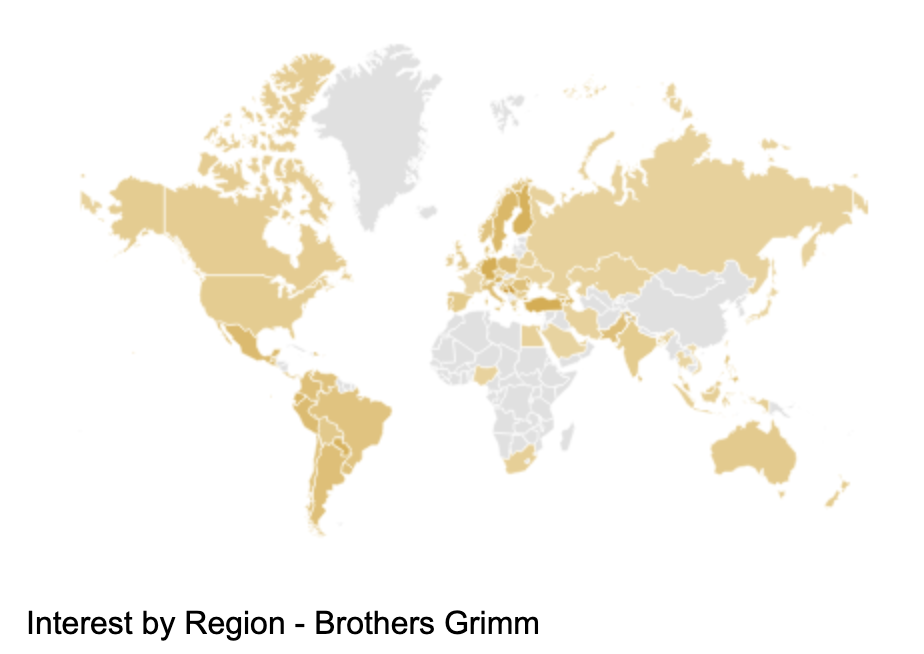
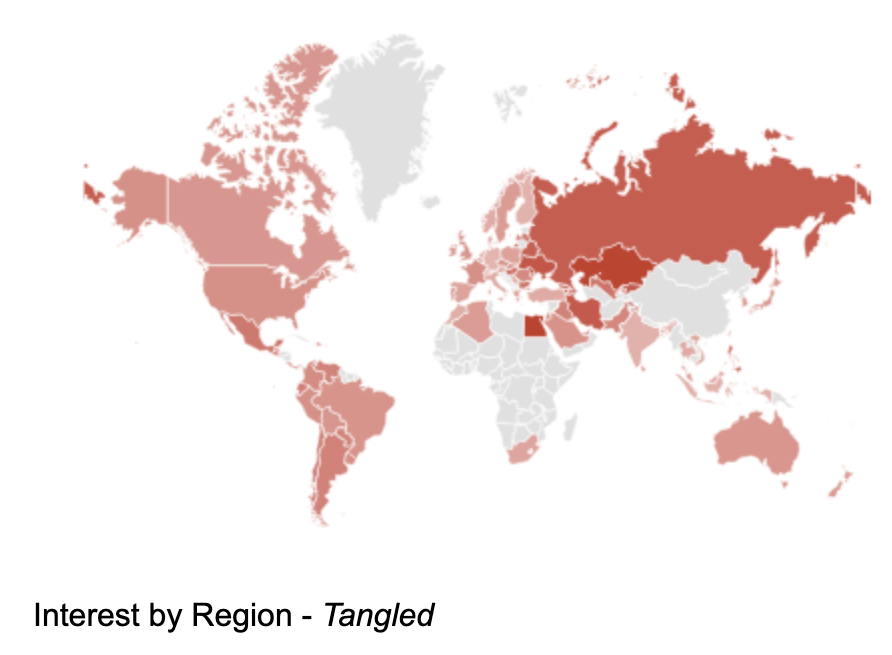
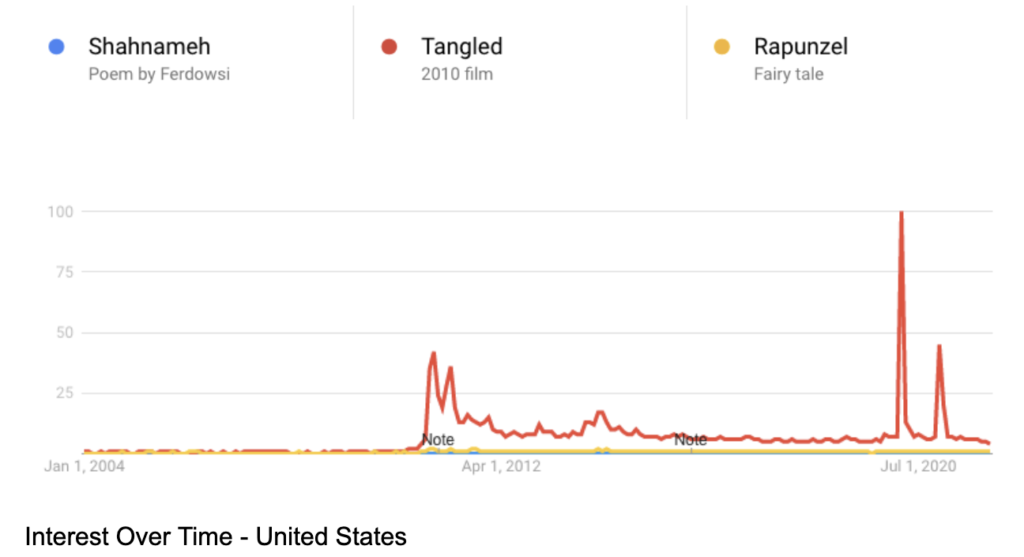
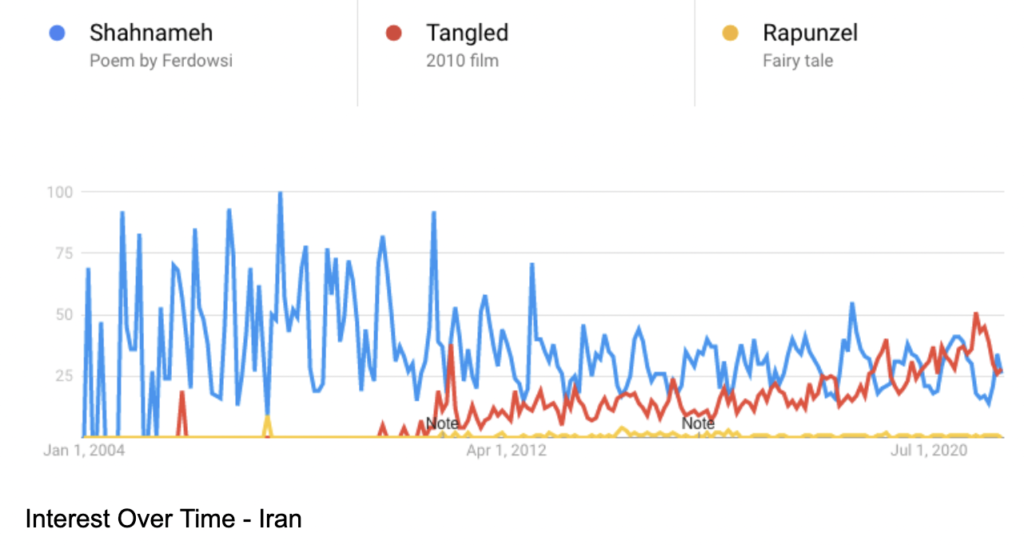
A few Natural Language Processing (NLP) techniques were used to analyze these three texts; basic exploration such as phrase-finding helped us identify relevant scenes throughout the three sources, as well as word frequencies. Topic modelling was then used to look further into these three sources; to assess whether the subject in all three sources matched and could be organized into multiple themes while still making sense.
We wanted to start with some basic research to see how many times Rapunzel and Rudabeh were mentioned. In Shahnameh, the character that inspired Rapunzel was named Rudabeh before being reinterpreted and given a new name. We analyzed our three data sources, applying separate versions and interpretations of the same story, by utilizing a text analysis method known as topic modeling.
Shahnameh and the Original Scene
Traced back to Rapunzel’s inspirational origin, Shahnameh is a classical Persian epic poem written by poet Ferdowsi late in the 10th century. The poem spans more than 50,000 couplets long, and among the stories told is the romance of Zal and Rudabeh. The infamous scene occurs early in the poem, phrased from an English translation below:
‘’ Hearing his words, she loosened her hair, which cascaded down, tumbling like snakes, loop upon loop. She said, “Come, take these black locks which I let down for you, and use them to climb up to me.” Zal gazed in astonishment at her face and hair, and said, “This would not be just. May the day never dawn when I strike at my soul like this, thrusting my spear into a wounded heart.” He took a lariat from his page, looped it, and hurled it upwards without saying another word; the lariat caught on the battlements, and Zal quickly climbed up its sixty cubits. ‘’’
Below is a glimpse of Rudabeh’s appearances throughout Shahnameh, as well as the infamous scene.
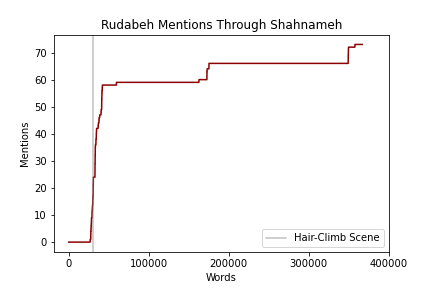
While Rudabeh shows up on many occasions all throughout the poem, the character is not central to the text by any means. This obviously relates to Shahnameh being an epic poem rather than a story, but Rudabeh disappears for up to a 150,000 words at one stretch within the text – the equivalent of more than 30 scripts of the movie Tangled.
Grimm Brothers’ Fairy Tale
The first appearance of the Rapuznel character as known today, was in Grimms’ Fairy Tales, a collection of fairy tales originally published in German in the 19th century. Our analysis used an English translation of the collection’s 7th edition from 1857. Though the plot doesn’t exactly match its later version from Tangled, this was closer to the tale that most are familiar with today; Rapunzel with her splendid hair locked away in a tower by a sorcerer, who is let up into the tower through the iconic hair-climbing scene.
Similarly below, a glimpse of Rapunzel’s appearances throughout the tale is visualized, along with instances of the infamous scene.
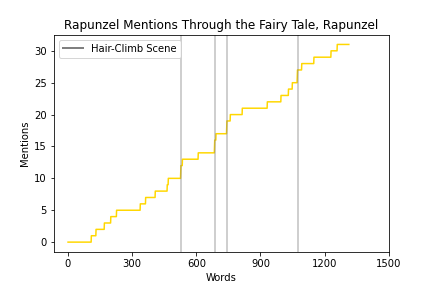
Much shorter compared to its earlier inspirational origin, as well as its later screen adaptation, the fairy tale of Rapunzel was written through less than 1500 words. Interestingly, Rapunzel is mentioned more than one third of the times that its inspirational origin, Rudabeh, is mentioned in Shahnameh, despite the fairy tale being more than 260 times shorter.
Disney’s Tangled
Finally on to everyone’s well known pink-dressed Rapunzel; the movie adaptation of the fairy tale by Disney, Tangled. Further adaptations in literary and media forms followed the Brothers Grimm fairy tale, but the iconic princess is by far most linked to the disney movie. Again, the plot is not exactly matched, however much is kept from the original German tale. While based in the fictional kingdom of Corona, the setting including the iconic tower is a very Bavarian-like one, as well as the fact that Rapunzel’s iconic dress is of traditional Germanic origins, known as a dirndl.
Below is a recap of Rapunzel’s mentions throughout Tangled:
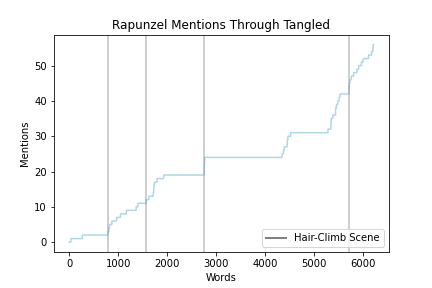
Though a much longer version, Tangled mimicked the original tale through having the iconic hair-climbing scene four times. Being a film adaptation, though, meant that unlike written works, script mentions did not translate directly to character appearances in this case.
Themes Around the Character’s Collective Appearances
While Shahnameh was its own separate extensive epic, and did not share much of the fairy tale’s plot, many of its independent plots share overall themes with the fantasy of Rapunzel as we know it. Through topic modeling, the following topics were identified throughout the three texts collectively; the machine learning model categorizes topics based on keyword relevance and lists keywords that are mostly associated with the respective topics. We then tried to interpret these keyword collections into the broad themes that their respective topics represent.
Topic 0: Life and Humanity
Topic 1: The Rapunzel Fairytale
Topic 2: Rural Living
Topic 3: Freedom
Topic 4: War
Topic 5: Kingdom
Topic 6: Warrior
Topic 7: Gateway
Topic 8: Ascension to Power
Topic 9: Contractor
Potential Analysis Expansion
Rapunzel is by no means Disney’s only adaptation of an inspired fairy tale. An expansion of this work could look further into many of the other iconic Disney tales and their origins, of any patterns around how Disney chooses to adapt works through its own spin, or even further back into Rapunzel’s journey and analyzing some of the many other adaptations besides the three mentioned here.

